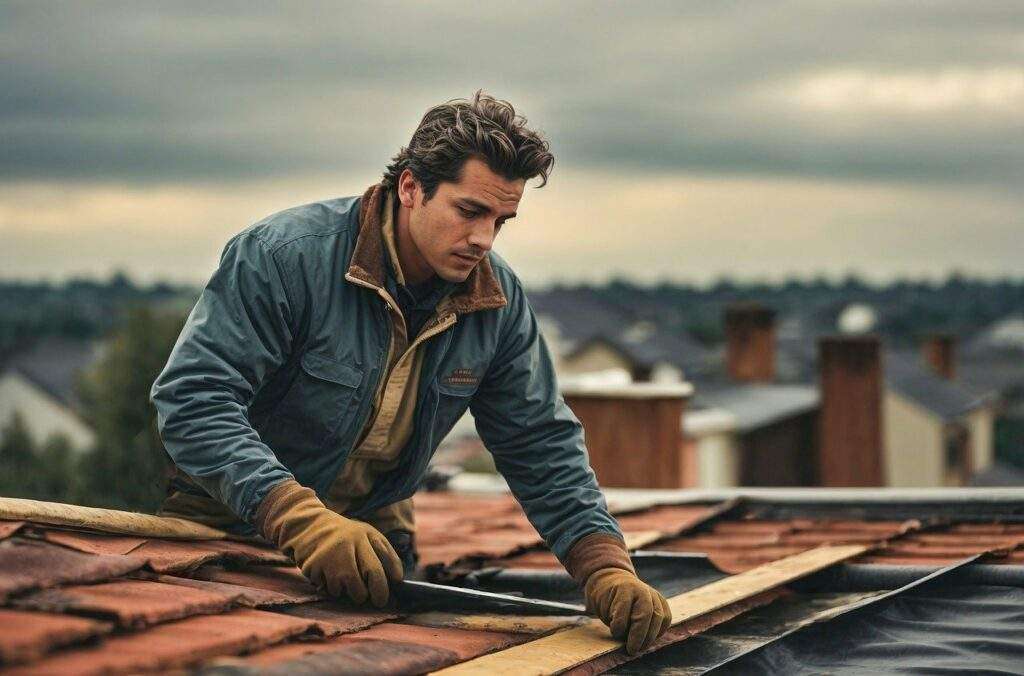
Your roof is a critical component of your home’s structure, protecting it from the elements and providing safety and security. However, roofs can sometimes suffer unexpected damage due to severe weather, fallen debris, or other unforeseen events. When your roof is damaged, it’s crucial to address the issue promptly to prevent further harm to your property.
Safety First
Before you begin any roof repair, prioritize your safety. Inspect your surroundings for potential hazards, such as live electrical wires. If the damage is extensive or if you’re uncomfortable with the situation, consider contacting a professional for emergency roof repair to assess and repair the damage.
Identify the Source of the Leak
If you notice a leak inside your home, try to identify the source. Water may travel along rafters or other structures before it drips into your living space. The location of the leak inside can often give you a clue about where the damage is on the exterior.
Temporary Fixes
In an emergency situation, you can apply temporary fixes to mitigate further damage while you wait for professional assistance.
- Tarping: Use a tarp or plastic sheet to cover the damaged area. Secure it with boards, sandbags, or heavy objects to prevent it from blowing away. This will help keep water out temporarily.
- Roofing Cement: Apply roofing cement or roof sealant to small holes or cracks. It can help stop leaks temporarily, but it’s not a long-term solution.
- Temporary Shingles or Flashing: If you have spare roofing materials, you can use them to patch small holes or replace damaged shingles or flashing.
Clear Debris
If the damage was caused by fallen branches, debris, or any other foreign objects on your roof, carefully remove these items to prevent further damage. Exercise caution while doing this, and be aware of potential hidden hazards.
Inside Damage Control
While waiting for professional repairs, manage the damage inside your home. Place buckets or containers under the leak to collect dripping water. If the ceiling is sagging, puncture a small hole to release the water slowly. This can help prevent the ceiling from collapsing.
Professional Inspection
Once the immediate danger is addressed, contact a professional roofing contractor to inspect the damage thoroughly. Even if you’ve applied temporary fixes, a professional assessment is essential to determine the extent of the damage and the necessary repairs.
Document the Damage
Take photographs of the damage both inside and outside your home. These photos can be useful for insurance claims and documentation. Also, keep a record of any emergency repair expenses, as these may be covered by your homeowner’s insurance policy.
Insurance Claims
Contact your insurance company to report the roof damage. Provide them with the photographs and any documentation of emergency repair expenses. Your insurance adjuster will assess the damage and guide you through the claims process.
Professional Repairs
If the emergency repair was a temporary fix, schedule a professional roofing contractor to perform permanent repairs. Proper repairs ensure the long-term integrity of your roof and help prevent future issues.
Consider a Full Roof Replacement
In some cases, especially if your roof is older and has sustained significant damage, it might be more cost-effective to opt for a full roof replacement rather than continued repairs. A new roof can provide better protection and peace of mind.
Stay Prepared
After experiencing an emergency roof repair, stay prepared for future incidents. Create an emergency kit that includes tarps, roof sealant, tools, and other materials that can be used for temporary repairs. Being prepared can help you act swiftly in the event of unexpected damage.
Handling emergency roof repairs requires a combination of immediate action, temporary fixes, professional assessment, and preventive measures. The key is to address the situation promptly, keep safety a priority, and work with professionals to ensure that your roof is restored to its full protective function. Proper maintenance and preparation can help reduce the risk of future emergencies and keep your home safe and dry.